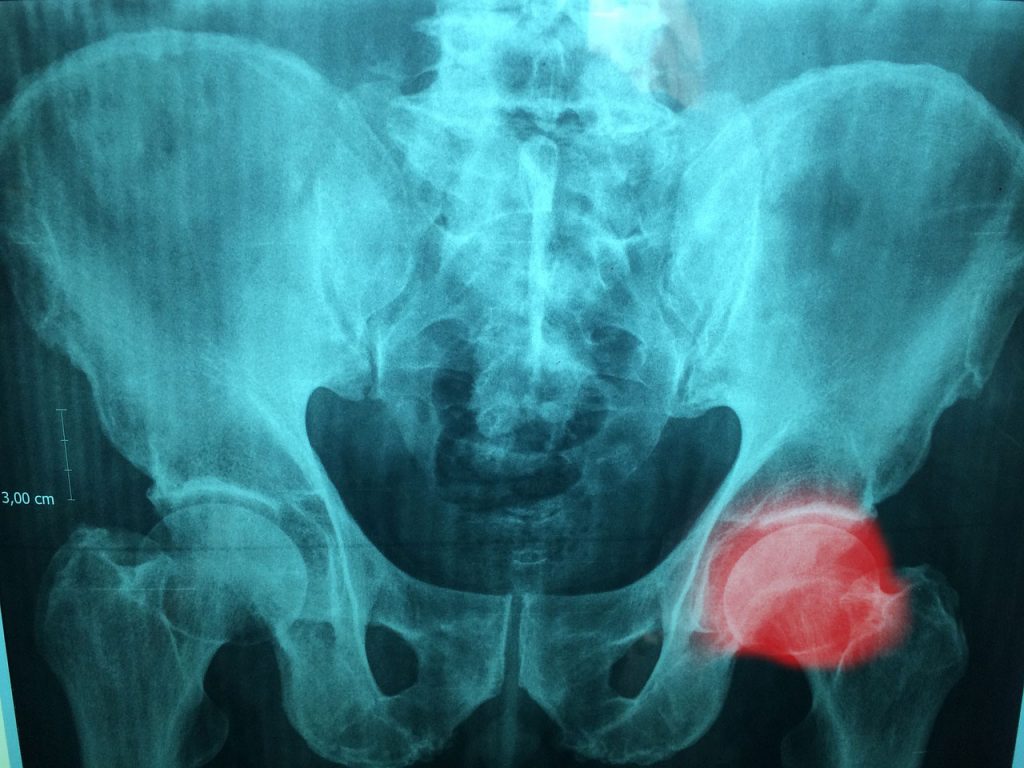What is Dancer’s Hip? Snapping Hip Syndrome Explained
Dancer’s hip, often called snapping hip syndrome or coxa saltans, is a usually painless condition that affects approximately 5% – 10% of the US population. This condition is characterized by a palpable or audible snapping or clicking in one or both hip joints.
There are three main types of coxa saltans, which are categorized as either external, internal or intra-articular.
External Snapping Hip Syndrome
The most common type of dancer’s hip is external extra-articular coxa saltans. This type involves either the posterior IT band (fascia that runs from the hip to the shin) or the anterior part of the gluteus maximus (main hip extensor muscle that makes up the buttocks) catching and “snapping” over the rounded portion of the femur (thighbone) that extends from the hip (called the greater trochanter).

External snapping hip syndrome usually indicates that the iliotibial band (IT band) or the gluteus maximus is tight. This type of dancer’s hip typically has a gradual onset of snapping or pain over the greater trochanter and is commonly associated with trochanteric bursitis (hip bursitis) and IT band syndrome.
External Dancer’s HIp Symptoms
- Snapping during hip flexion and extension (e.g. while running or climbing stairs)
- Snapping may cause a sudden, sharp pain on the outside of the hip
- Pain that worsens with repeated activity
- Popping is visible as the IT band or gluteus muscle snaps
- Pain worsens slowly over time
- Hip feels like it may pop out of socket when snapping
Possible Contributing Factors
People with the external type of coxa saltans may also have the following conditions or anatomies:
- A prominent greater trochanter
- Coxa vara
- Fibrotic scar tissue
- Smaller lateral pelvic width
- Past issues with and surgeries for anterolateral knee instability
Internal Snapping Hip Syndrome
The second most common type of dancer’s hip is internal coxa saltans. This type occurs when the hip flexors – the iliopsoas tendon and rectus femoris – get hung up on parts of the hip joint. With internal snapping hip syndrome, either the iliopsoas tendon (which connects the two inner hip muscles to the femur) snaps over a protrusion in the pelvic bone or the rectus femoris (the quadriceps muscle) snaps over the ball of the hip’s ball-and-socket joint (the femoral head).
Internal snapping hip is usually associated with iliopsoas bursitis, a painful inflammation of the bursa at the front of the hip joint.
Internal Dancer’s Hip Symptoms
- Sudden, sharp pain deep within the front of the groin during hip flexion, extension or external rotation
- Pain that worsens with activity
- Pain that worsens slowly over time
- Hip pops from running, standing up from a seated position or when the hip rotates the leg outward, away from the body
- Snapping causes audible click or pop

Intra-articular Snapping Hip Syndrome
Intra-articular coxa saltans is caused by a traumatic injury to the cartilage in the hip joint or the joint itself. As such, intra-articular snapping hip syndrome is typically accompanied by significant hip pain.
Common Intra-articular Dancer’s Hip Causes
- Injury to the articular cartilage
- Acetabular labral tear
- Loose material in the hip (e.g. broken bone fragments or soft tissue)
- Intra-capsular lesions, synovial chondromatosis
- A history of hip dislocation
Does dancer’s hip go away on its own?
Snapping hip syndrome often can be treated at home with rest and activity modifications. Depending on the severity or cause of your dancer’s hip, an orthopedic hip specialist may prescribe stretching and strength exercises, or physical therapy.
In severe cases, your orthopedic surgeon may recommend hip arthroscopy to repair a torn labrum or other injuries causing pain, immobility or discomfort.
If you’re experiencing pain associated with dancer’s hip or would like to speak to our orthopedic hip surgeon, please contact us today.
Leave a Reply